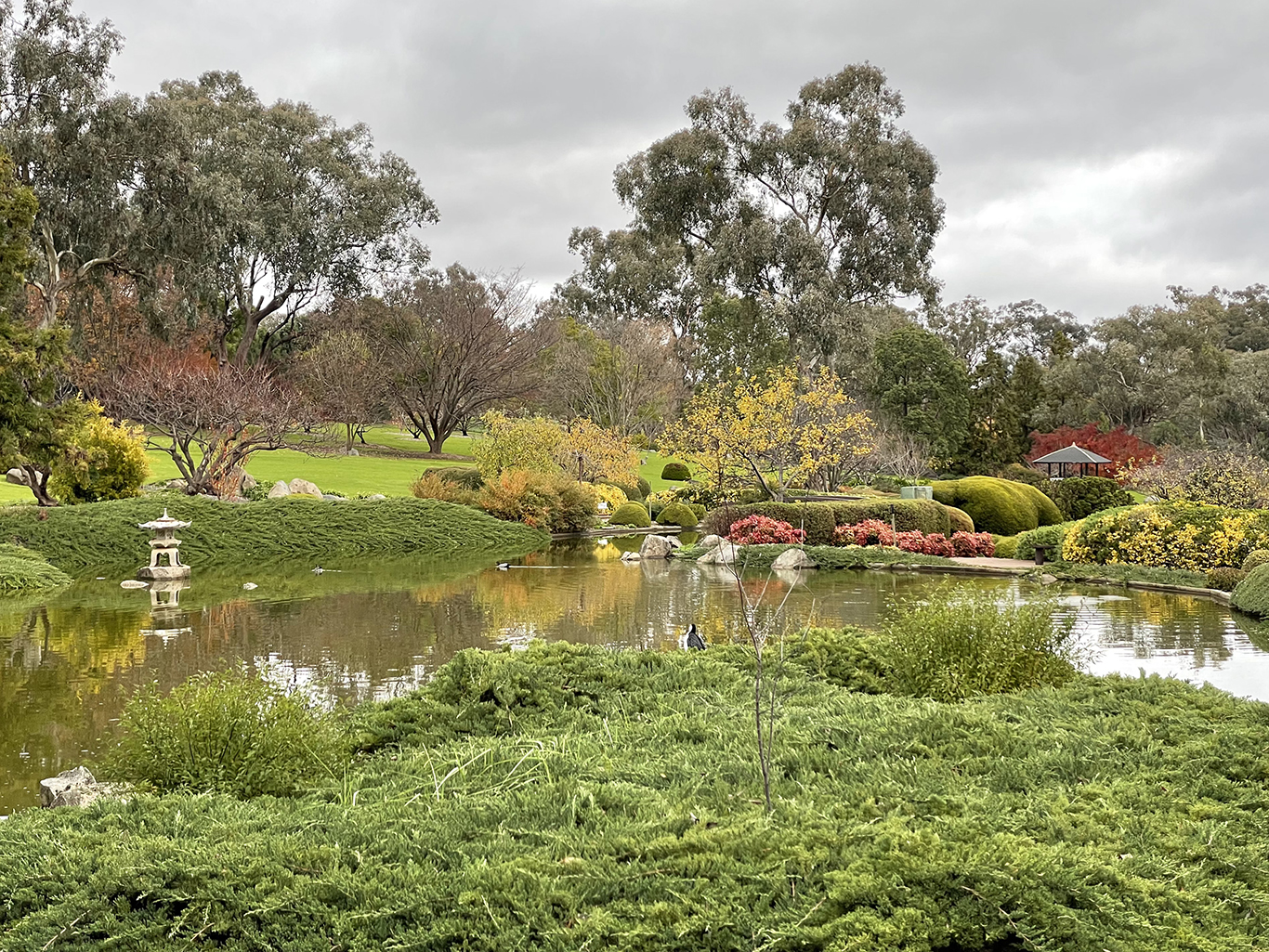
Cowra Japanese gardens
A monument to peace and reconciliation
The relationship between Cowra and Japan did not start as one of friendship. Cowra is the site of one of the largest POW camps in Australia and many the men held here were Japanese soldiers and aviators. In August of 1944 over 1000 Japanese prisoners, who considered a death in battle preferable to the shame of being a POW, attempted the largest POW breakout in British and Australian war history. Over 400 men managed to escape to the surrounding countryside, but all were recaptured. 234 Japanese and five Australian men lost their lives and 107 were injured in the breakout attempt.
From the aftermath of tragedy has come a long-lasting friendship between the people of Cowra and Japan. Reconciliation began when Australian returned servicemen cared for the graves of the POWs who died in the breakout. In 1963 a war cemetery was built by the Japanese Government near the camp site, and those killed during the breakout, along with other Japanese war dead from around Australia, were interred there. Relations were strengthened again in 1978 when construction began on the largest Japanese Garden in the southern hemisphere. To this day there are continued cultural exchanges between the people of Cowra and Japan including a long running student exchange program between Cowra High School and Seikei High School in Tokyo.
Legacy of the Cowra Breakout
The 5 hectares of gardens were designed by Ken Nakajima, one of Japan’s leading landscape designers, and opened in 1979. Designed in the style of a Kaiyushiki or strolling garden, there are over 3km of pathways to explore. The garden features a rocky hillside, manicured lawns and hedges, streams and waterfalls flowing into a picturesque lake, an authentic tea house and a collection of Bonsai. Mr Nakajima considered the garden to be his best work, describing it as “a piece of Japan where the spirits of the Japanese soldiers reside together with the Australians in order to maintain peace and prosperity and to guard Cowra forever.” He asked that after his death (in 2000) that his ashes be scattered in the garden by his family.
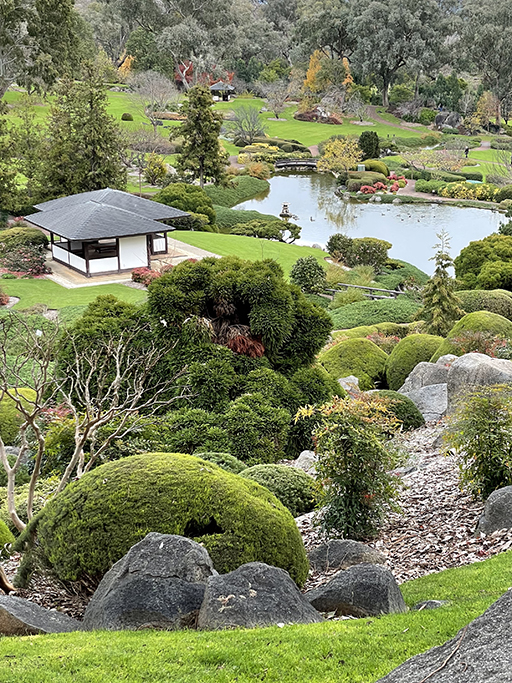
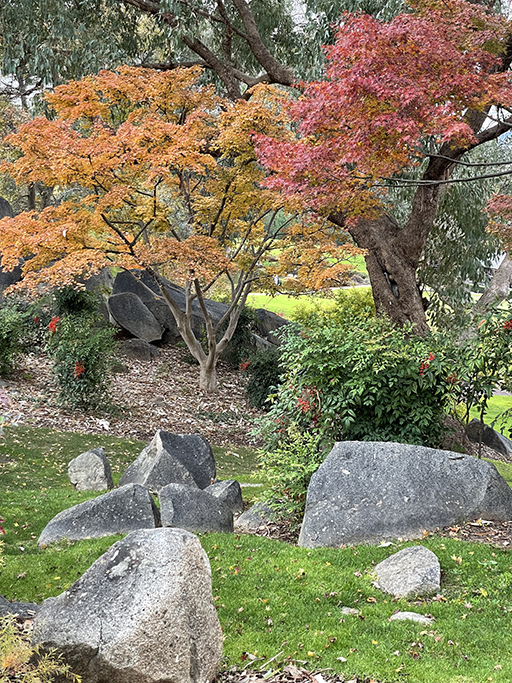

As soon as you enter the garden the atmosphere is one of peace and tranquillity. The combination of natural materials in the manmade landscape creates a sense of harmony, and every aspect of the design is well thought out and beautifully executed. The eucalypts retained within the garden blend with the landscape beyond the boundaries and make the garden feel even bigger than it is. We spent about an hour strolling the meandering paths, and on this cool and overcast day we were fortunate to avoid any crowds.
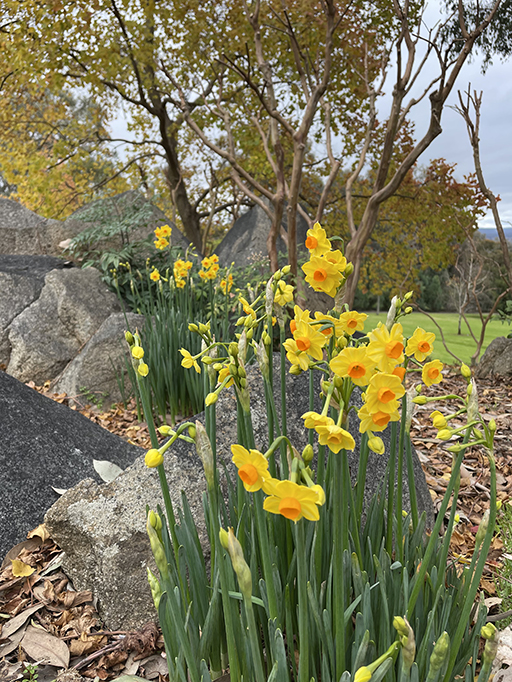
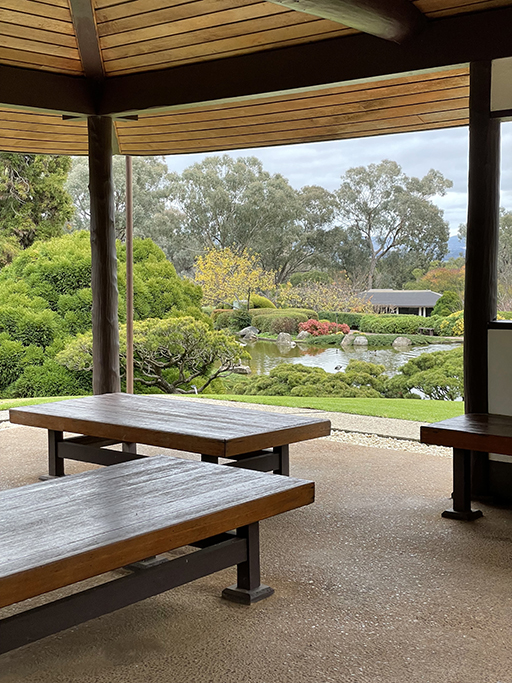

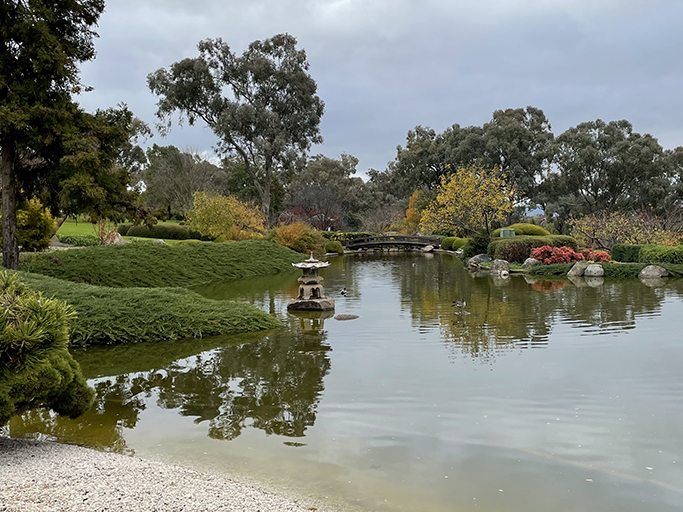
The complex also includes a café, gift shop and Cultural Centre. The Cultural Centre has two galleries featuring a collection of Japanese artworks and artefacts that have been donated over the years from Japanese art exhibitions in Australia and by individuals and groups visiting from Japan. There are several annual events held in the gardens including the Sakura Matsuri or Cherry Blossom Festival in September. More info here
Cowra is approximately a four hour drive from Sydney, and while we enjoyed our visit to this lovely town in Autumn, I already have it in the diary to come back in Spring when the cherry blossoms planted throughout the area give their magnificent display.
